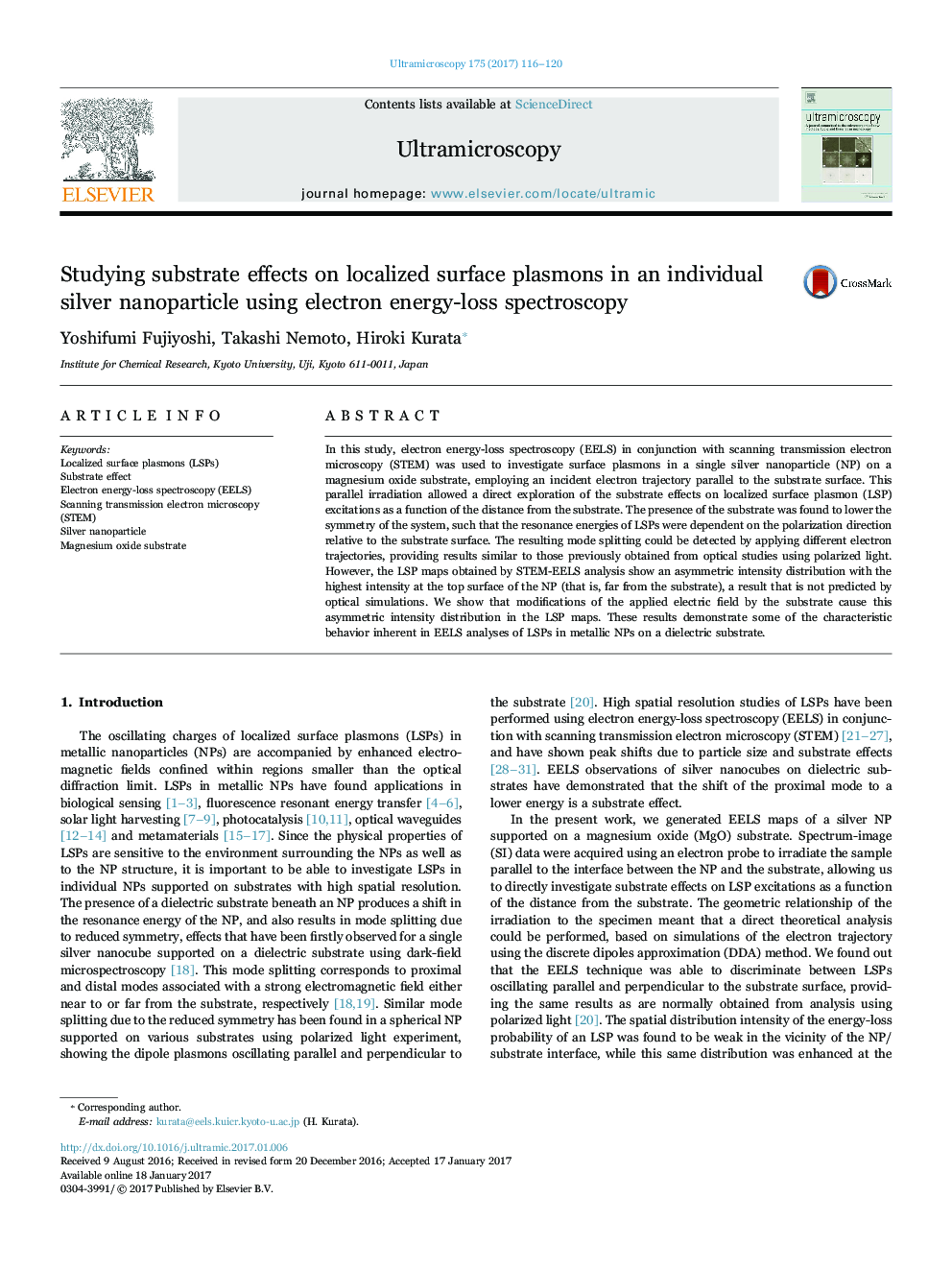| Article ID | Journal | Published Year | Pages | File Type |
|---|---|---|---|---|
| 5466829 | Ultramicroscopy | 2017 | 5 Pages |
Abstract
In this study, electron energy-loss spectroscopy (EELS) in conjunction with scanning transmission electron microscopy (STEM) was used to investigate surface plasmons in a single silver nanoparticle (NP) on a magnesium oxide substrate, employing an incident electron trajectory parallel to the substrate surface. This parallel irradiation allowed a direct exploration of the substrate effects on localized surface plasmon (LSP) excitations as a function of the distance from the substrate. The presence of the substrate was found to lower the symmetry of the system, such that the resonance energies of LSPs were dependent on the polarization direction relative to the substrate surface. The resulting mode splitting could be detected by applying different electron trajectories, providing results similar to those previously obtained from optical studies using polarized light. However, the LSP maps obtained by STEM-EELS analysis show an asymmetric intensity distribution with the highest intensity at the top surface of the NP (that is, far from the substrate), a result that is not predicted by optical simulations. We show that modifications of the applied electric field by the substrate cause this asymmetric intensity distribution in the LSP maps.
Keywords
Related Topics
Physical Sciences and Engineering
Materials Science
Nanotechnology
Authors
Yoshifumi Fujiyoshi, Takashi Nemoto, Hiroki Kurata,
